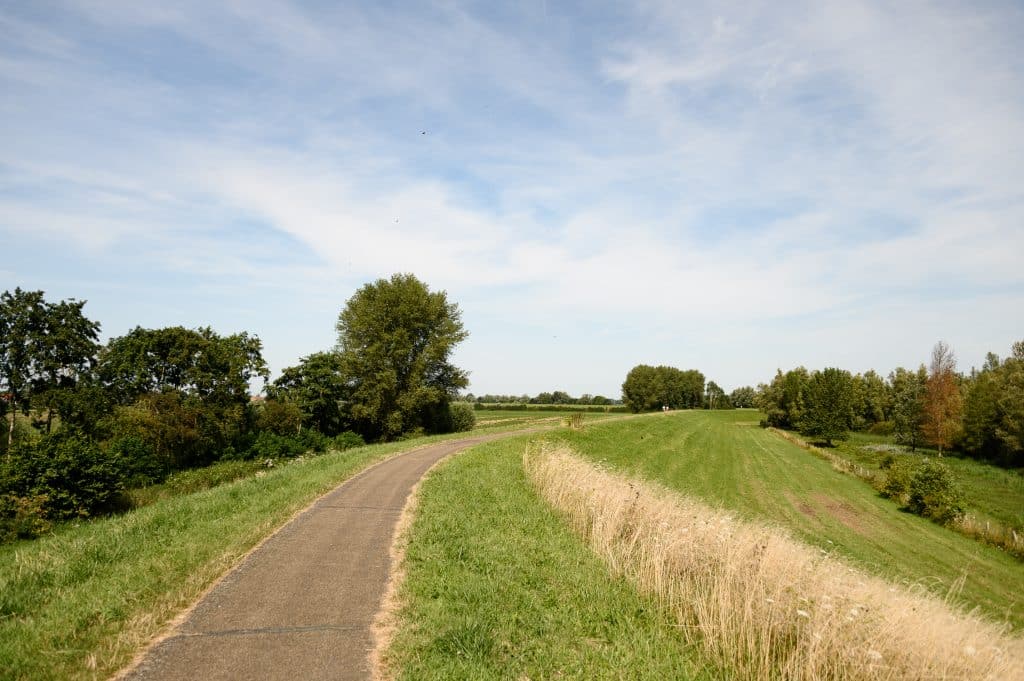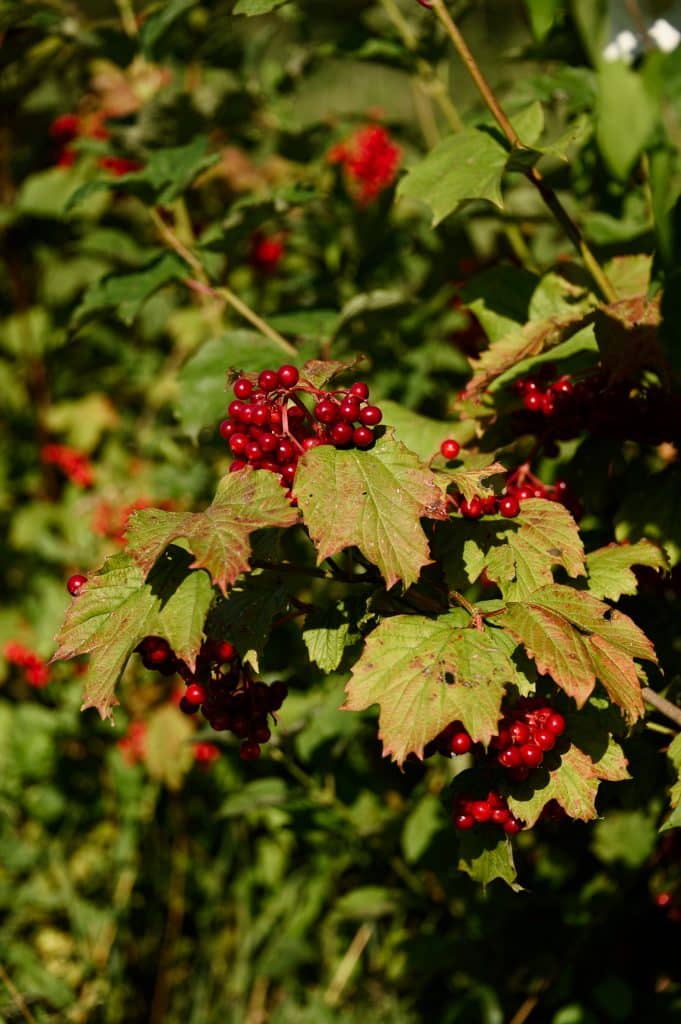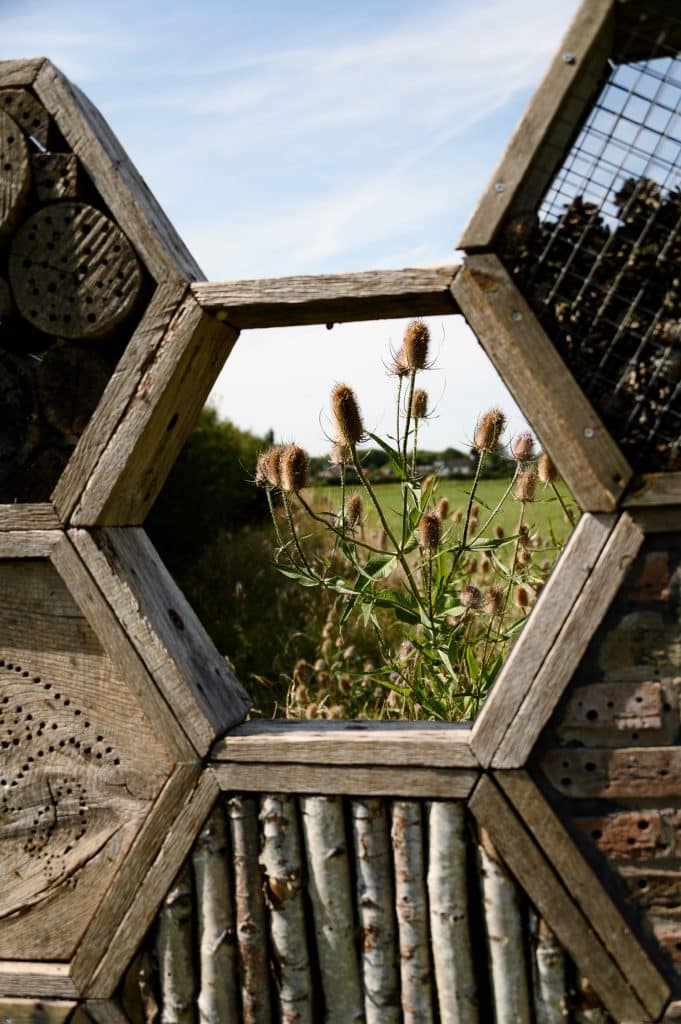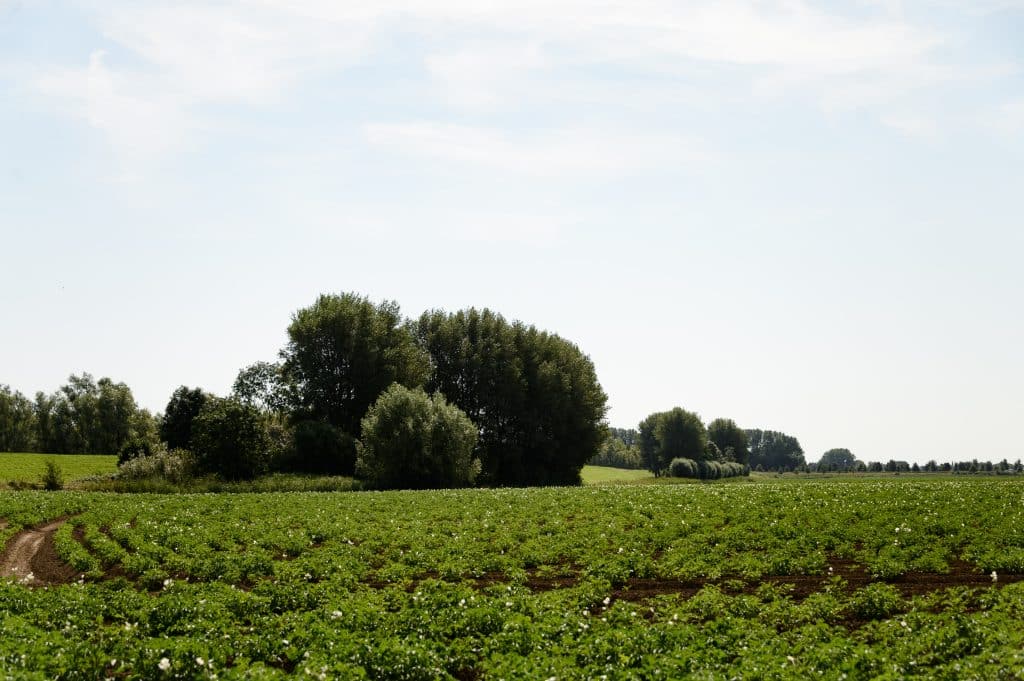Prisca Visser is a photographer with a love of the outdoors and nature. For the Biesbosch Line she regularly goes out to capture stories. This time she gets a tour of Struikwaard from manager Kelly of Brabants Landschap.
Prisca Visser is a photographer with a love of the outdoors and nature. For the Biesbosch Line she regularly goes out to capture stories. This time she gets a tour of Struikwaard from manager Kelly of Brabants Landschap.
The air vibrates and shimmers above the water of the large pool we are passing. Even though it is still early, I can already sense that it is going to be a warm day. A few swallows skim rakishly over our heads. Ahead of me I hear the swampy footsteps of caretaker Kelly. Her dog Marly is excited to be along and jumps impatiently around us. The three of us are out and about in the Struikwaard, a nature reserve along the Afgedamde Maas River. Kelly is manager (a kind of forester) of Brabants Landschap and is taking me in tow today to tell me all about this area.



To get here, we left our means of transportation behind and went on foot along the dike. Did I think the Shrub Swamp consisted only of the marshy section along the river, I was sorely mistaken. "This dike was only constructed in 1995," Kelly explains. "The inner dike portion of the Struikwaard used to consist of fields and meadows. Today, that looks very different."Altenatuur made sure that the Struikwaard was developed back then. They are still very much involved".
From the high position on the dike you have a good overview. Where there used to be vast meadows, there are now small fields crossed by long hedges. The outside of the dike where we walk consists of two large pools surrounded by trees and dense shrubbery. Here high water levels from the Lower Merwede have been deliberately taken into account. The water can flow in and flood the area up to the foot of the dike. One animal that benefits greatly from this is the beaver. We don't see it today, but we do find gnawing marks on a huge fallen willow.



That nature has free rein here can be seen by the many dragonflies flying low by. Sometimes one lingers on the lilac flowers of the water mint. "What is there to do here for a caretaker?" I ask Kelly. "We regularly make our rounds here," she explains. "We make sure the trails stay mowed for hikers. A herd of cows continues to graze the open areas. Fences are checked, after a storm it is important to check for fallen trees." At the last pond, we stop. On the other bank, we see a low embankment with round holes. Peering through her binoculars, she pauses for a moment. "This wall was made to provide nesting opportunities for the bank swallow. We also see the kingfisher here regularly". Today, luck is not on our side and we have to settle for grebes and moorhens.



We climb back up the dike, Marly wagging her tail. From this high point you have an excellent view of the part of Struikwaard that lies within the dike. "Since it's under our management, we've been doing our best to get more diversity here," says Kelly. There has been a large project to monitor partridge. Partridges are a good reflection of diversity in nature. If they are doing well, there is plenty of food and shelter for other animals. The endless fields are gone, split into small meadows bordered by tall hedges. These hedges are planted to provide a food source for birds and other animals throughout the seasons. Once closer, I see the dark red berries of the hawthorn gleaming among the leaves. The rowan and Gelderland rose are also full of nutritious clusters of berries. There are roses among them that will soon provide hips that the mice love. Above us we hear the call of a buzzard. So in a short time you can already see the importance of the food chain.
Figuring out and having the layout of such an area as the Struikwaard implemented is also part of a manager's duties. This involves many consultations with other parties. Besides being regularly in the field, Kelly also spends hours in the office. "But that's not boring, because everything you do is ultimately about nature. And that's why I love this job so much! One time you're outside helping to haul fencing, the next day you have a group of school children under your care. Because we also do a lot of education. During tours we tell them about the area and our work. No two days are the same".
By now the sun has climbed higher in the sky and we are walking toward a piece of arable land.




On the outskirts of Struikwaard is an elongated field where vegetables are grown. Not a plain of one crop, but small rows of different varieties. I see tomatoes, pumpkins and some late potatoes. Kelly explains that local residents are doing strip farming here through Altenatuur. By dividing a field into strips with alternating crops, you avoid major pests on the land. Every year the vegetables rotate from one spot to another. No pesticides or fertilizers are used and the soil is only lightly tilled. Because there are also cabbages such as cauliflower and red cabbage, they are harvested until late in the fall.



As you cycle along the dike, from above you have a good view of the landscape intersected by the hedges. Now you know what those are for! Halfway along, a wide strip of ground is sown with all kinds of flowers and plants. Now that the first signs of autumn are appearing, the cardamom bulbs are full of seeds. Goldfinches love them! Feel free to step down and take a look. There is a huge insect hotel where there is still a lot of activity. You can walk along the hedge and rest on the bench of Brabants Landschap.
The Struikwaard invites for a nice walk. Close to the traffic circle on the Maasdijk you will find the beginning of the so-called 'Perenbomenlaantje'. Through a wooden staircase you walk down the dike. The path is shaded by pear trees and leads along the field with strip cultivation. This probably used to be a path to walk faster to the church. A little after the church you can turn right into the Manhuisweg. Here you walk along fields with hedges. At the end turn right again and after a few dozen meters turn left down the dike into the outer dike area of Struikwaard.
Like Prisca, would you like to visit nature reserve the Struikwaard? Below are all the links.
- Learn more at Bushesworth
- More natural areas in the Biesbosch Line.
- Walking tour around Fort Giessen
- Brabant Landscape
- Altenatuur
- Strip cultivation
Text and photos: www.priscavisser.nl. Here you will find all of Prisca's blogs.